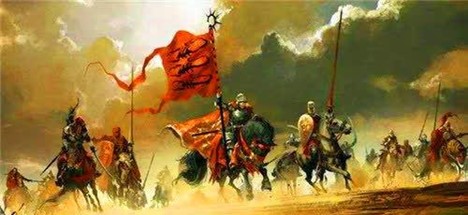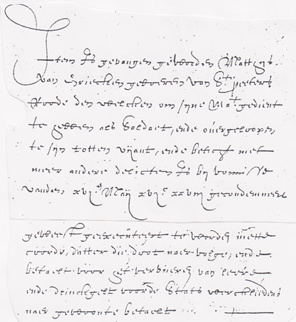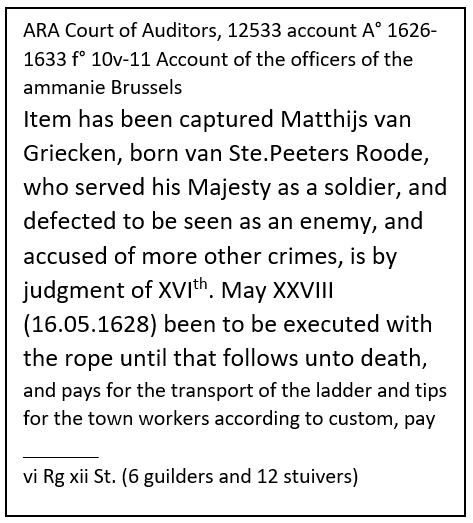They all the time fought against the ruling order.
Frans Vandenbosch 方腾波 13.12.2022

After many years of genealogical research, I came across rather by chance my descent from the Dukes of Brabant and Charlemagne. [i] There are 39 generations between me and Charlemagne (Charles the Great), so Charlemagne (742 – 814) is my 36th Great Grandfather. Charlemagne’s great-grandparents are born in Landen, in Brabant, the southeast of current Flanders.[ii]
I had noticed before that my immediate ancestors had not always followed the path of legality, and that they often went against the established powers, whether they were in power or not, ordinary people, servant or duke. A brief overview of what my ancestors have been up to in the past:
Charlemagne (Karl der Große) (742 – 814)
Charles had his residence in his Aachener Königspfalz; the Octagon Pfalzkapelle was part of the palace complex. It was there in the Imperial Palatine Chapel that Charles had his throne, made of pure white marble Corinthian columns, recovered from a temple in Rome, flattened and reworked to serve as the sitting surface of his throne.[iii] It was making clear to the world that the Romans were defeated and that from now on he, Charlemagne was ruling Europe.
In various attempts to conquer Saxony, Charlemagne started the Saxon wars in 772. After several bloody battles, Charlemagne conquered the Westphalians and their allies. It was after the victory in October 782 in Verden, Lower Saxony, that Charlemagne ordered the death of 4500 Saxons. Charles’ biographer wrote that the dead bodies were exposed along the roads to make it clear to the Saxons who was their new ruler. In 804 there was a new revolt in Nordalbingia; Charlemagne deported 10000 Saxon families to Neustria (= Flanders, Brabant and the North of France) .. which is still today visible in several family names in Flanders.
The Dukes of Brabant
The consecutive Dukes of Brabant are in my pedigree from generation 19 to 27. They were not the most soft-hearted rulers in Europe.
Duke Jan I van Brabant “the victor” (1252 – 1294) , in Battle of Woeringen [iv], one of the largest battles in medieval Europe, conquered Limburg. The Duchy of Limburg was added to the Duchy of Brabant in 1289. In the battle on 05.06.1288, only 40 Brabant knights died against about 1100 knights on the Gelderland side. In the church books of Woeringen they noted 2400 deaths in total.
Duke Hendrik I van Brabant “the martial” (1207-1248) led the Third Crusade (1189-1192) and commanded the sieges of Sidon and Beirut.
Duke Jan II van Brabant “the peaceful” (1275 – 1312) led the Crusade of the poor.[v]
Defenestration of Leuven (1379)
In Leuven, at that time the capital of the duchy Brabant, there was a first revolt of workers and craftsmen in 1360, led by Peter Couterel against the Leuven nobility. They had the support of Duke Jan III of Brabant. In the winter of 1378, Wouter van der Leyden led another revolt of craftsmen against the Nobility of Leuven. They took revenge by killing Wouter van der Leyen in December 1379. At this, the craftsmen retaliated and captured patricians and handed them over to the angry mob in Leuven. On 22.12.1379 the disgruntled people stormed the town hall and threw the patricians out of the windows. At least fifteen patricians were killed in this way. In this bloody revolt, the Van den Bossche family was divided. Some of them were member of the Utter Liemingen[vi] patrician clan. Others were at the side of the craftsmen.
My direct forefathers, name bearers. (1526 …)
All that time, my direct parental ancestors, name bearers Vandenbosch were living in Leuven. In 1526, Peter Van den Bossche owned an inn called De Rooden Leeuwe[vii] (the Red Lion) in the Mechelsestraat, where travellers could exchange horses. Peter was liege lord of lands in Sint-Pieters-Rode, 5 km East of Leuven. Peter van den Bossche was married with Katelijne Uten Liemingen. They belonged to the most noble clan of Leuven, one of the Seven Genera of Leuven.[viii]
Another one in the Naamsestraat was a painter of cartoons for the pageant wagon mystery & miracle players, also for minnezangers (minstrels).
The mysterious gap (1536 – 1677)
After the death of the aforementioned Peter in 1536, the genealogical data are sparse. Until they suddenly show up again with the marriage of Jan Van den Bossche in 1677. A gap of 140 years without exact whereabouts of the Van den Bosch family.
Here I can, until I come across more proper old documents, only make calculated guesses.
– in 1522, the Rooden Leeuwe building complex was burned down, both the main inn, the brewery, and the small house, called “the 3 organs”.
– Peter Van den Bossche belonged to the nobility in Leuven, but all his farmlands were in the lower part of Sint-Pieters-Rode.
– that part of the village was called “de ketterije” (heresy land) on ancient maps of that time.
– Jan Van den Bossche reappears in Sint-Pieters Rode in 1677 when he married Anna Govaerts. Jan and 3 of his children died in 1691 of the plague. He was churchwarden.
– Anna, his widow and the only surviving son Matthew got their food from the “table of the Holy Spirit”, the Catholic relief system for the poor.
– Much later, at the beginning of 1800, the church archives mention the abolition of an “eternal indulgence” in the name of Van den Bosch.
All these events are pointing to the following conclusion:
The Van den Bossche family became involved in the religious troubles of that time, the conflict between Catholics and Protestants, which was particularly in Sint-Pieters-Rode very bitter. They were forced to flee to the Protestant north (or elsewhere), their lands confiscated.
More than a century later, when they returned, dirt poor, they were forced to pay as penance, an eternal indulgence to the church. From Noble to Needy in 140 years.
The above conclusion is my own, I can’t prove it. One day, I hope to find in the archives the documents to confirm my conclusion.
Matthijs Van Griecken (1600 – 1628)
In a remote maternal branch, I have an ancestor Matthijs Van Griecken, born in Sint-Pieters-Rode in 1600.
The Twelve Years’ Truce (1609 to 1621) in the Eighty Years’ War (1568 to 1648) came to an end with the death of Filip III of Spain on 31.03.1621. Matthias, after having served in the army of Filip III of Spain, and immediately after the restart of the war in the Spanish Netherlands, joined the other side, the army of Maurice, Prince of Orange. He certainly was not the only one. He was captured by the Spanish army and sentenced to death. The verdict reads as follows:
 |  |
Johannes Baptist Van den Bosch (1743 – 1822)
Only 3 generations after Matthew, the only surviving male family name continuer, his great-grandson, Johannes Baptist Van den Bosch married on Tuesday 09.04.1771 Elisabeth Servranckx in Erps.[ix] She again was a through the Van Hamme family, a descendant of the Dukes of Brabant and Charlemagne. The tiny Erps village is until today, known as the cradle of the Dukes of Brabant descendants.
Frans Elsen (1900 – 1972)
was my maternal grandfather and my Godfather. He is a descendant of one of the tens of thousands of families who were forcibly deported from Saxony to the Duchy of Brabant by Charlemagne in the year 805. The origin of the Elsen family is in the village of Elsen near Paderborn.[x]
Had a moustache, exactly the same shape as Hitler, which was not uncommon at that time. During WWII, he made and sold Schnaps to the German army. But at the end of WWII, with the retreat of the German Army, he was betrayed, arrested and handed over to the new authorities. He was never officially convicted but was held in prison for several weeks. It was Minister Paul van Zeeland who freed him from prison.
Georges Vandenbosch (1926 – 2000)
My father had a highly developed sense of justice; he has founded and chaired more than a dozen local and national socio-cultural organizations. As a permanent deacon, he was thanked by Pope John Paul II (Karol Józef Wojtyła) in a private audience in Rome.
My father fought on the front line during the the Leuven Vlaams crisis, the student revolt for the split of the Catholic University of Leuven in 1968. During a charge by the mounted gendarmerie, he threw a large bag of marbles onto the street, causing the horses to fall. Shortly afterwards he was arrested and imprisoned in the Leuven auxiliary prison, popularly known as the horse stables. A day later he was freed there, without any form of trial.
[i] Afstamming Vandenbosch Voorouders Vandenbosch
[ii] Landen https://en.wikipedia.org/wiki/Landen
[iii] Throne of Charlemagne https://en.wikipedia.org/wiki/Throne_of_Charlemagne
[iv] Battle of Woeringen https://en.wikipedia.org/wiki/Battle_of_Worringen
[v] Crusade of the Poor, de armenkruistocht https://www.brabantserfgoed.nl/page/5686/hertog-jan-ii-en-de-armenkruistocht
[vi] Uten Liemingen https://nl.wikipedia.org/wiki/Uten_Liemingen
[vii] Peeter Van den Bossche Leenman
[viii] De Zeven Geslachten / the Seven Genera of Leuven https://nl.wikipedia.org/wiki/Zeven_geslachten_van_Leuven
[ix] Erps Kwerps https://nl.wikipedia.org/wiki/Erps-Kwerps
[x] Elsen https://de.wikipedia.org/wiki/Elsen_(Paderborn)


